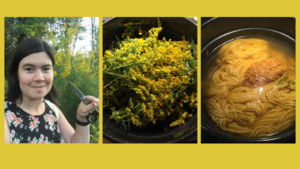Course:Collected Works by Lorine Niedecker
| CRWR 501P 003 |
|---|
 |
| Advanced Writing of Poetry |
|
| Important Course Pages |
| Categories |

[A Sample from Bronwen]
As I look back at the poets I wrote about for my Ph.D. dissertation in Comparative Literature, I see how several of these writers shaped my own poems and relationship to writing as well as being subjects of my scholarly inquiry.
I’ve written a bit about how attention to Bernadette Mayer’s Midwinter Day helped me see how caregiving and chores coexist with serious aesthetic and intellectual work, for example. Another would be Lorine Niedecker, whose haiku-inspired five-liners I both wrote about and wrote after.
I’d been writing a lot of prose poems and working with syntax, but after spending time with these poems, I was curious to do more with the line. Niedecker’s five-liners, often published in magazines in groups titled “In Exchange for Haiku” have a rhyme or slant rhyme between the third and fourth line, but then end with a non-rhyming fifth line. In rhyming but declining to conclude with rhyme, these poems, brief though they are, give an impression of continuing past the conclusion.
This form also appealed to me as a “manageable” size of poem to attempt amid teaching, writing articles, applying to jobs, and caring for two small children. I spent several months writing one five-liner per day. I see Niedecker in the “For the Colors of a New Place” (below—the first poem in my book The Silk the Moths Ignore) in the use of “dye” that brings an echo of “die,” in the “shrill thread” that is both my daughter’s voice and the yarn I wanted to dye (and eventually did dye!) with bright goldenrod flowers, in the desire to color everything “all yellow” (bright, hopeful) that also reveals a lurking opposite impulse.
